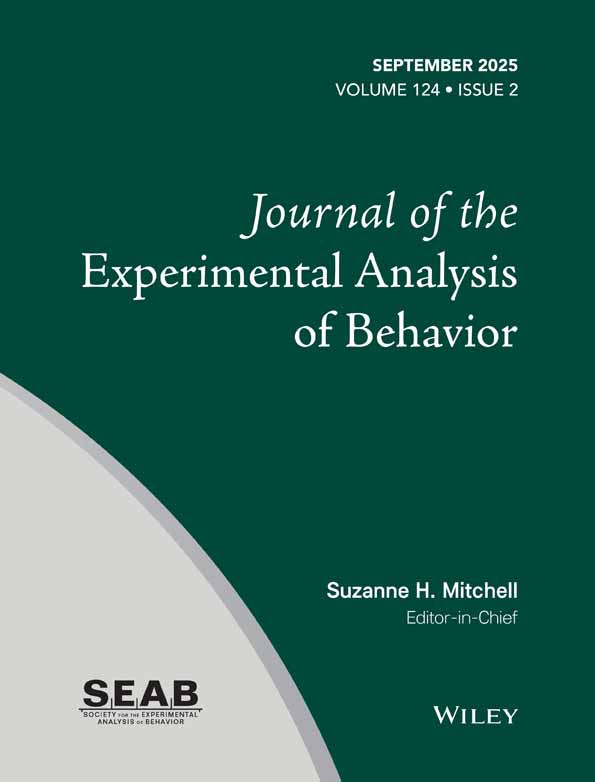CHOICE BETWEEN CONCURRENT SCHEDULES1
This research was supported in part by NIMH grant 16928 and by a Research Fellowship awarded to Marilynne Moffitt by the University Research Committee of the University of Utah.
Abstract
Six pigeons pecked for food in a three-key experiment. A subject at any time could choose the left or right key and receive reinforcement according to one two-key concurrent variable-interval variable-interval schedule of reinforcement, or it could peck the center key. A peck on the center key arranged the complementary two-key concurrent variable-interval variable-interval schedule on the left and right keys. The two different two-key concurrent schedules arranged reinforcements concurrently and were signalled by two different colors of key lights. Choice behavior in the presence of a given color conformed to the usual relationship in two-key concurrent schedules: the relative frequency of responding on a key approximately equalled the relative frequency of reinforcement on that key. Preference for a two-key concurrent schedule, which was equivalent to preference for a color, was measured by the percentage of all responses on the left and right keys in the presence of that color: this percentage approximately equalled the percentage of all reinforcements that were delivered in the presence of that color. Thus, choice between concurrent schedules conforms approximately to the same relationship as does choice between alternatives in a single concurrent schedule.




